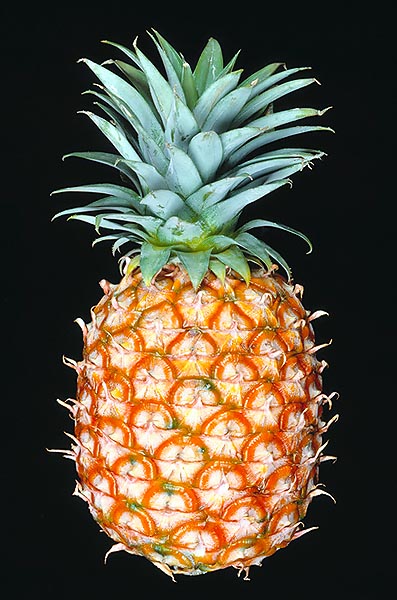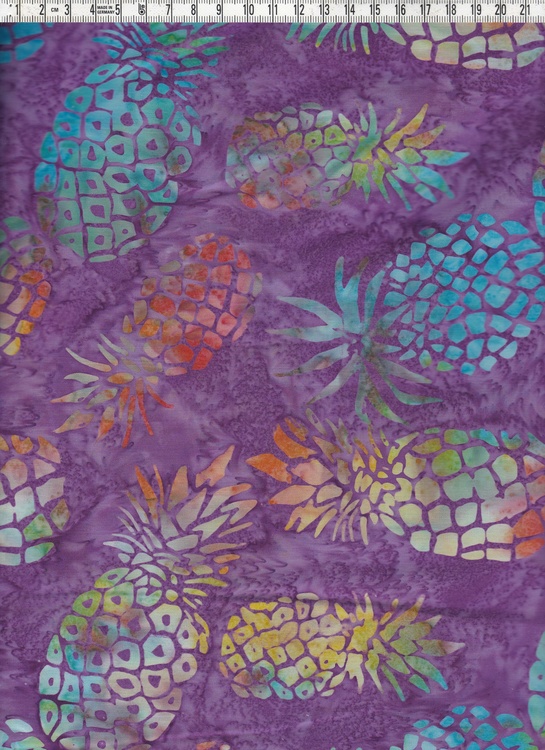I den stadig voksende verden av hageentusiaster, søker vi stadig etter planter som ikke bare pryder våre grønne oaser, men som også vekker fascinasjon og beundring. Blant et mylder av valg skinner én slekt spesielt klart med sin unike fremtoning og eksotiske sjarm: Eucomis. Kjærlig kjent som ananaslilje, har denne bemerkelsesverdige planten fortryllet gartnere i århundrer med sine karakteristiske blomsterstander som minner om en miniatyr ananas, toppet med en krans av grønne bladverk. Hos oss har vi dedikert omfattende forskning og praktisk erfaring for å presentere den mest komplette og dyptpløyende guiden om Eucomis, en guide som vil gi deg all den kunnskapen du trenger for å mestre dyrkingen av denne storslåtte planten og la den blomstre i all sin prakt.
Vår ambisjon er ikke bare å informere, men å inspirere. Vi ønsker å løfte sløret for Eucomis’ mange hemmeligheter, fra dens botaniske klassifisering og historiske reise fra de sørlige spissene av Afrika til hager over hele verden, til de fineste detaljene om dens fysiologi, vekstsykluser og tilpasningsevne. Vi vil utforske de uendelige mulighetene Eucomis tilbyr for landskapsdesign, dens rolle i bærekraftige hagemiljøer, og hvordan den kan berike ditt personlige rom med sin unike estetikk. Denne artikkelen er et resultat av nitid arbeid, en samling av ekspertise og lidenskap, utformet for å være den definitive ressursen for alle som ønsker å omfavne Eucomis i sin hage.
Hva er Eucomis? En Dypdykk i Ananasliljens Botanikk og Historie
For å fullt ut verdsette Eucomis, må vi først forstå dens røtter – både bokstavelig og figurativt. Slekten Eucomis tilhører familien Asparagaceae, underfamilien Scilloideae, og stammer opprinnelig fra de tempererte og subtropiske regionene i Sør-Afrika. Navnet «Eucomis» er av gresk opprinnelse, der «eu» betyr «god» og «kome» betyr «hårtopp», en treffende beskrivelse av de karakteristiske bladene som kronet blomsterstanden. Denne slekten omfatter omtrent 10-15 anerkjente arter, hver med sine unike egenskaper, men alle deler den gjenkjennelige ananaslignende formen.
Historien om Eucomis er like fascinerende som planten selv. Den ble først beskrevet botanisk på 1700-tallet og har siden den gang blitt en favoritt blant planteeventyret og samlere. Fra de tidlige dagene av botaniske ekspedisjoner, der modige utforskere risikerte liv og lemmer for å bringe sjeldne arter tilbake til Europa, har Eucomis vært en ettertraktet tilføyelse til botaniske hager og private samlinger. Dens popularitet økte gradvis gjennom århundrene, spesielt under den viktorianske perioden da eksotiske planter ble et symbol på status og raffinement. I dag fortsetter Eucomis å være en verdsatt plante, ikke bare for sin estetiske appell, men også for sin robusthet og relativt enkle dyrking, noe som gjør den tilgjengelig for gartnere på alle nivåer.
Vi vil dykke dypere inn i de spesifikke artene og kultivarene som definerer slekten, og utforske deres individuelle trekk, preferanser og bidrag til mangfoldet av ananasliljer. Det er viktig å merke seg at selv om mange refererer til alle arter som «ananasliljer», er det signifikante forskjeller i størrelse, blomsterfarge, og til og med vinterherdighet mellom dem. Denne forståelsen er avgjørende for å velge de riktige variantene for ditt spesifikke klima og hageforhold, og for å sikre maksimal suksess i din dyrking.
Fysiologi og Vekstsyklus: Forstå Eucomis fra Løk til Blomst
For å optimalisere veksten og blomstringen av Eucomis, er en grundig forståelse av dens fysiologi og vekstsyklus uunnværlig. Eucomis er en løkplante, noe som betyr at den lagrer næring i en underjordisk struktur – løken. Denne løken er ikke en ekte løk i samme forstand som en tulipanløk, men en mer kjøttfull stengelbase som fungerer som et overlevelsesorgan gjennom dvaleperioden.
Vekstsyklusen til Eucomis begynner vanligvis sent på våren, når temperaturene stiger og dvalen er over. Fra løken spirer det frem en rosett av brede, lansettformede blader som ofte er glinsende grønne, men som hos noen kultivarer kan ha en tiltalende bronsefarget eller purpurfarget skjær. Disse bladene er avgjørende for fotosyntesen, prosessen der planten omdanner sollys til energi, noe som driver veksten og til slutt blomsterutviklingen. Somrene er Eucomis’ vekstsesong, preget av robust bladvekst og gradvis utvikling av blomsterstengelen.
Blomsterstengelen, som kan variere betydelig i høyde avhengig av art og kultivar, bærer en tett klynge av små, stjerneformede blomster. Disse blomstene, som varierer i farge fra kremhvit og grønnlig til dype rosa og purpurfarger, er tettpakket rundt stengelen og kulminerer i en karakteristisk grønn eller farget «krone» av små bladverk, som gir den dens ikoniske ananasutseende. Blomstringen varer ofte i flere uker, fra midtsommer til tidlig høst, avhengig av klima og sort. Etter blomstringen, hvis pollinering finner sted, vil blomstene gi vei til dekorative frøkapsler, som kan forlenge plantens visuelle interesse inn i høstmånedene.
Når høsten nærmer seg, forbereder Eucomis seg på dvaleperioden. Bladverket begynner å visne og gulne, noe som signalerer at planten trekker tilbake næringsstoffer til løken. Denne prosessen er kritisk for plantens overlevelse gjennom vinteren. I kalde klimaer, der bakken fryser, må løken enten graves opp og lagres frostfritt, eller beskyttes grundig med et tykt lag mulch for å forhindre frostskader. Vi vil detaljere disse prosessene i dybden, for å sikre at dine Eucomis-løker overlever vinteren og er klare til å spire med ny kraft neste vår.
Eucomis i Hagen: Plantedyrking fra A til Å
Å lykkes med Eucomis i hagen krever oppmerksomhet på detaljer og en forståelse av dens spesifikke behov. Vår omfattende guide tar deg gjennom hvert trinn i dyrkingsprosessen, fra valg av riktig plassering og jordtype til vanning, gjødsling og vinterbeskyttelse.

Valg av Plassering og Solforhold for Eucomis
Eucomis trives best i full sol til delvis skygge. I Norge, med våre ofte mildere somre, vil full sol vanligvis være ideelt for å fremme robust vekst og rikelig blomstring. En plassering med minst 6-8 timer direkte sollys per dag er å foretrekke. Imidlertid, i regioner med svært intense sommervarmer, kan litt ettermiddagsskygge være gunstig for å beskytte bladverket mot svie. Når du velger et sted, vurder også drenering. Eucomis er svært intolerant overfor stående vann, som kan føre til løkråte. En svakt skrånende bed eller et hevet bed er utmerkede valg for å sikre god drenering.
Vi anbefaler også å tenke på beskyttelse mot sterk vind, spesielt for de høyere varianter. Selv om blomsterstenglene er relativt robuste, kan kraftig vind skade bladverket eller til og med knekke stengelen. En plassering i le for bygninger, hekker eller andre planter kan bidra til å beskytte dine Eucomis-planter.
Jordkrav og Forberedelse: Nøkkelen til Sunn Eucomis-vekst
En godt drenert jord er av største betydning for Eucomis. Vi anbefaler en rik, løs og fruktbar jord som er godt supplert med organisk materiale. Ideelt sett bør jorden ha en nøytral til svakt sur pH (pH 6.0-7.0). Hvis jorden din er tung og leirholdig, er det avgjørende å forbedre dreneringen. Dette kan oppnås ved å blande inn store mengder organisk materiale som kompost, godt råtnet husdyrgjødsel, bladkompost eller barkkompost. Sand og grus kan også bidra til å forbedre dreneringen, men bør brukes med forsiktighet, da for mye sand kan redusere jordens evne til å holde på næringsstoffer og vann.
Før planting, løsne jorden til en dybde på minst 30-40 cm. Dette gir løkene rikelig med plass til å etablere seg og utvikle et sunt rotsystem. Forbered gjerne jorden om høsten før planting om våren, slik at organisk materiale får tid til å brytes ned og integreres i jorden.
Planting av Eucomis-løker: Dypt og Riktig
Planting av Eucomis-løker skjer vanligvis om våren, etter at faren for frost er over og jorden har varmet seg opp. I Norge betyr dette ofte sent april til mai, avhengig av region. Løkene bør plantes med spissen opp, omtrent 10-15 cm dypt, og med en avstand på 15-30 cm mellom hver løk, avhengig av forventet størrelse på den voksne planten. Mindre varianter kan plantes tettere, mens større varianter trenger mer plass for å utvikle seg fullt ut.
Etter planting, vann grundig for å fjerne luftlommer rundt løken. Vær forsiktig med overvanning i de første ukene, da dette kan føre til råte før løken har etablert et rotsystem. Et tynt lag med mulch kan hjelpe til med å opprettholde jordfuktigheten og undertrykke ugress.
Vanningsrutiner for Eucomis: Balanse er Nøkkelen
Riktig vanning er avgjørende for suksess med Eucomis. Under vekstsesongen, fra våren til tidlig høst, trenger Eucomis regelmessig og konsekvent vanning. Jorden bør holdes jevnt fuktig, men aldri vannmettet. Som nevnt, er stående vann katastrofalt for løkene.
Vi anbefaler å vanne dypt og sjeldnere, i stedet for grunt og ofte. Dette oppmuntrer røttene til å vokse dypere, noe som gjør planten mer tørketolerant og robust. Sjekk jordfuktigheten før vanning; stikk fingeren 5-10 cm ned i jorden. Hvis det føles tørt, er det på tide å vanne. Reduser vanningen gradvis når bladverket begynner å gulne om høsten, og stopp nesten helt under dvaleperioden.
Gjødsling av Eucomis: Næring for Rik Blomstring
For å fremme frodig vekst og rikelig blomstring, dra nytte av en balansert gjødselplan for Eucomis. Vi anbefaler å starte med en lett gjødsling ved planting, for eksempel med en langsomt virkende granulatgjødsel med lavt nitrogeninnhold. Dette gir en jevn tilførsel av næringsstoffer uten å fremme for mye bladvekst på bekostning av blomsterutviklingen.
Under vekstsesongen kan du gi en flytende gjødsel hver 2-4 uke, spesielt en formulering som er rik på fosfor og kalium, som fremmer blomstring og rotdannelse. Unngå gjødsel med høyt nitrogeninnhold, da dette kan føre til frodig grønt bladverk på bekostning av blomster. Slutt å gjødsle sent på sommeren eller tidlig høst, slik at planten kan forberede seg på dvaleperioden.
Skadedyr og Sykdommer: Beskytt Din Eucomis
Heldigvis er Eucomis generelt en relativt sykdoms- og skadedyrresistent plante. Imidlertid er det noen problemer man bør være oppmerksom på for å sikre plantens helse. Den vanligste faren er løkråte, forårsaket av overvanning eller dårlig drenering. Symptomer inkluderer myke, misfargede løker og visne bladverk. Forebygging er den beste medisinen: sørg for utmerket drenering og unngå overvanning.
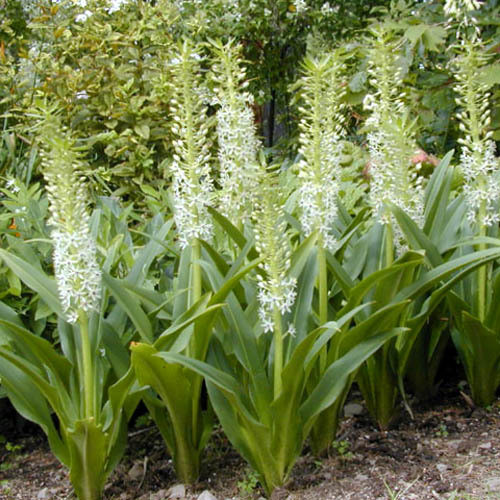
Andre potensielle problemer inkluderer snegl og snegleskader på ungt bladverk, spesielt tidlig i sesongen. Bruk sneglepellets eller andre egnede sneglemidler om nødvendig. Bladlus kan av og til angripe, men kan vanligvis skylles av med en sterk vannstråle eller behandles med insektssåpe. Sjeldnere kan virussykdommer forekomme, manifestert som misfarging eller deformerte blader. Syke planter bør fjernes for å forhindre spredning.
Regelmessig inspeksjon av plantene dine er nøkkelen til tidlig oppdagelse og behandling av eventuelle problemer. Ved å være proaktiv kan du holde dine Eucomis-planter sunne og blomstrende.
Overvintring av Eucomis: Slik Sikrer du Gjentatt Blomstring
I mange deler av Norge, hvor vintertemperaturene synker under frysepunktet, er overvintring av Eucomis en kritisk prosess for å sikre at løkene overlever og blomstrer igjen neste år. Selv om noen varianter kan være mer hardføre enn andre, er det generelt tryggest å anta at Eucomis ikke er fullt vinterherdig i store deler av landet.
Oppgraving og Lagring av Eucomis-løker
Den mest pålitelige metoden for overvintring er å grave opp løkene om høsten, etter at bladverket har visnet naturlig, men før den første harde frosten. Dette signaliserer at planten har trukket tilbake næringsstoffer til løken. Grav forsiktig rundt løken for å unngå skade, og løft den forsiktig ut av jorden.
Fjern overflødig jord fra løken, men unngå å vaske den. La løkene tørke på et kjølig, tørt og godt ventilert sted i noen dager for å «herde» dem og forhindre råte. Deretter lagres de i et frostfritt miljø. Ideelle lagringsforhold er et mørkt, kjølig (mellom 4-10°C) og tørt sted, for eksempel en kjeller, garasje eller bod. Løkene kan lagres i papirposer, nettposer, eller kasser fylt med torvstrø, sagflis eller vermikulitt for å gi litt isolasjon og absorbere overflødig fuktighet. Sørg for god luftsirkulasjon for å forhindre mugg.
Inspiser løkene med jevne mellomrom gjennom vinteren for tegn på råte eller sykdom. Fjern eventuelle skadede eller råtne løker umiddelbart for å forhindre spredning.
Overvintring i Potte: En Enkel Metode for Inneplanting
For Eucomis dyrket i potter, er overvintring enda enklere. Når temperaturene begynner å synke om høsten, flytt hele potten til et frostfritt sted. Reduser vanningen betydelig; jorden skal holdes nesten tørr gjennom dvaleperioden. Du kan eventuelt klippe ned det visne bladverket. Plasser potten på et mørkt, kjølig sted, som nevnt ovenfor. Om våren, når temperaturene stiger, kan potten flyttes ut igjen, og vanningen kan gradvis økes etter hvert som ny vekst spirer frem.
Beskyttelse av Eucomis i Mildere Klimaer: Mulching
I de mildeste delene av Norge (f.eks. noen kystnære områder) hvor jorden ikke fryser dypt, kan Eucomis potensielt overvintre utendørs med tilstrekkelig beskyttelse. Dette innebærer å påføre et tykt lag (15-20 cm) med organisk mulch over løkene om høsten. Egnet mulch inkluderer halm, flis, bark, eller godt råtnet løv. Mulchen vil isolere jorden og beskytte løkene mot ekstreme temperatursvingninger. Det er imidlertid viktig å fjerne noe av mulchen tidlig om våren for å tillate jorden å varme opp og forhindre at løkene råtner under for fuktige forhold.
Selv med mulchbeskyttelse er det ingen garanti for at Eucomis vil overleve i kalde klimaer. Risikovurdering er viktig, og oppgraving er alltid den sikreste metoden for å bevare dine verdifulle løker.
Eucomis Varianter og deres Unike Egenskaper
Slekten Eucomis er mangfoldig, med en rekke arter og kultivarer som tilbyr et bredt spekter av størrelser, farger og blomstringsperioder. Å velge riktig variant kan dramatisk påvirke hagens utseende og følelse. Vi vil presentere noen av de mest populære og bemerkelsesverdige artene og kultivarene, og fremheve deres unike trekk.
Eucomis comosa: Den Klassiske Ananasliljen
Eucomis comosa er kanskje den mest kjente og dyrkede arten, ofte referert til som den «klassiske» ananasliljen. Den er kjent for sine høye, elegante blomsterstengler som kan nå opp til 60-90 cm i høyde. Blomstene er vanligvis grønnhvite til kremfargede, ofte med et purpurfarget skjær, og toppes av en fremtredende krone av grønne blader. Det finnes en rekke populære kultivarer av E. comosa, inkludert:
- ‘Sparkling Burgundy’: En slående kultivar med mørke, vinrøde blader og stilker, som gir en fantastisk kontrast til de lysere, kremfargede blomstene. Denne varianten gir et dramatisk element til hagen, selv før blomstring.
- ‘Confetti’: Kjent for sine lysegrønne blader og blomster med et mer distinkt, lilla skjær, noe som gir den et festlig og fargerikt utseende.
- ‘Oakhurst’: En annen populær kultivar med dypt purpurfargede blader og stilker, supplert med grønnhvite blomster. Den er noe mer kompakt enn ‘Sparkling Burgundy’.
- ‘Cornwallis Giant’: Som navnet antyder, er dette en stor og imponerende kultivar, med blomsterstengler som kan nærme seg en meter i høyden, og store, kremfargede blomsterstander.
Eucomis bicolor: Den Toskaftede Skjønnheten
Eucomis bicolor skiller seg ut med sine unike, toskaftede blomster, der hver enkelt blomst har grønne kronblad med en fremtredende purpurkant. Bladene er ofte bølgete langs kantene og kan ha purpurflekker på undersiden. Denne arten er vanligvis litt mer kompakt enn E. comosa, med høyder på 30-60 cm, noe som gjør den egnet for forkant av bed eller i potter. Dens distinkte fargekombinasjon gjør den til et fantastisk blikkfang.
Eucomis autumnalis: Den Tidlige Blomstreren
Eucomis autumnalis, som navnet antyder, er en av de tidligere blomstrende Eucomis-artene, ofte starter blomstringen i midtsommer og fortsetter inn i tidlig høst. Den produserer tette, kremhvite til grønnhvite blomsterstander og er kjent for sin robuste natur. Denne arten er vanligvis mer kompakt enn E. comosa, noe som gjør den til et utmerket valg for mindre hager eller containere. Den er også en av de mer hardføre Eucomis-artene.
Dvergvarianter og Kompakte Kultivarer for Potte og Små Hager
For de med begrenset plass eller som ønsker å dyrke Eucomis i potter, finnes det en rekke dvergvarianter og kompakte kultivarer. Disse er spesielt verdifulle for å skape eksotiske innslag på terrasser, balkonger eller i små byhager.
- ‘Pole-Evansii’: En kompakt kultivar av *E. autumnalis* med kremhvite blomster, ideell for potter.
- ‘Leia’ (eller ‘Maui’): En relativt nyere hybrid som er svært kompakt, med mørke, bronsefargede blader og rosa blomster. Perfekt for små potter.
- ‘Freckles’: En annen kompakt hybrid med flekkete blader og rosa blomster, som gir ekstra visuell interesse.
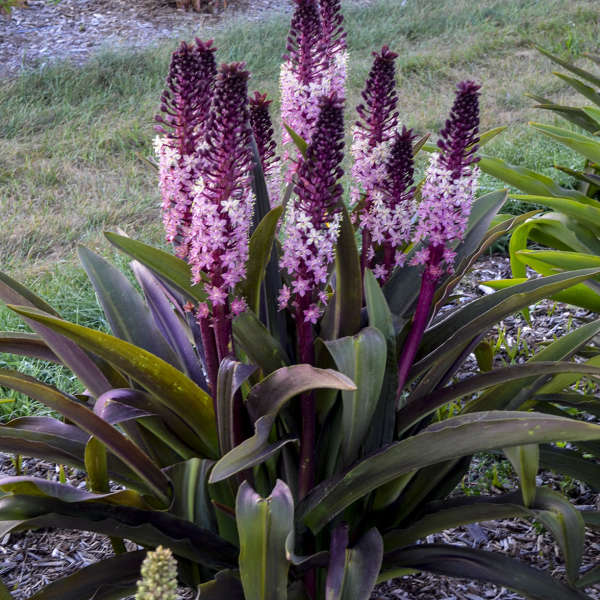
Når du velger Eucomis-varianter, vurder ikke bare blomsterfarge og størrelse, men også bladverket, da mange kultivarer tilbyr fantastiske bladfarger som bidrar til den totale estetikken gjennom hele vekstsesongen.
Eucomis i Landskapsarkitekturen: Kreative Bruksområder
Eucomis er mer enn bare en prydplante; den er et allsidig verktøy i hendene på en kreativ landskapsarkitekt og hagedesigner. Dens unike form og eksotiske utseende gjør den til et utmerket fokuspunkt og en verdifull tillegg til en rekke hagemiljøer.
Fokuspunkt og Solitærplante: Fang Blikket med Eucomis
Med sine særegne blomsterstander er Eucomis en naturlig kandidat for et fokuspunkt i hagen. En enkelt, godt etablert plante kan trekke oppmerksomhet og skape en dramatisk effekt. Plant den der den kan nytes på nært hold, for eksempel ved en sti, nær en sittegruppe, eller som en del av en inngangsportal. Vi anbefaler spesielt de høyere og mer fargerike kultivarene, som ‘Sparkling Burgundy’ eller ‘Cornwallis Giant’, for å maksimere visuell innvirkning når de brukes som solitærplanter.
Eucomis i Gruppeplantinger: Skap Spektakulære Effekter
For en enda mer imponerende visuell effekt, plant Eucomis i grupper. Massereplantinger skaper en slående blokk av farge og tekstur. Når de plantes i klynger av 3-5 eller flere, forsterkes deres unike form, og de skaper en følelse av overflod. Dette fungerer spesielt godt i store bed, langs grenser, eller som en del av en blandet staudebed. Vi anbefaler å blande forskjellige Eucomis-varianter med varierende høyder og farger for å skape dynamikk og interesse.
Eucomis i Krukker og Beholdere: Fleksibilitet og Mobilitet
Eucomis trives utmerket i krukker og beholdere, noe som gir enestående fleksibilitet i hagedesignet. Dette er spesielt gunstig i kaldere klimaer, da potter enkelt kan flyttes innendørs for overvintring. Bruk store nok potter for å gi røttene plass til å vokse, og sørg for god drenering. En stor krukke fylt med en gruppe Eucomis-planter kan skape en spektakulær aksent på en terrasse, balkong, eller ved inngangspartiet.
Vi anbefaler å kombinere Eucomis i potter med andre planter som har lignende vann- og solbehov, for eksempel prydgress, coleus, eller lavtvoksende sukkulenter, for å skape interessante komposisjoner og forbedre den generelle estetikken.
Kombinasjonsplantinger: Harmoni og Kontrast
Eucomis fungerer vakkert i kombinasjon med en rekke andre planter, og dens unike form kan enten skape harmoni eller en slående kontrast. For å fremheve dens eksotiske appell, kan du plante den sammen med andre tropisk-lignende planter som Canna, Dahlia, eller Ricinus communis (Lakserolje). For en mer subtil, men likevel iøynefallende kombinasjon, kan du pare den med fineprydgress som Miscanthus eller Pennisetum, som gir en myk bakgrunn som fremhever Eucomis’ strukturelle form.
Vi har funnet at Eucomis også ser fantastisk ut med planter som har kontrasterende blomsterformer, for eksempel flate blomster som Sedum, eller kaskader av blomster fra Nepeta eller Lavendel. Bladfargen til Eucomis, spesielt de purpurfargede kultivarene, kan også brukes til å skape fargekontraster med planter med limegrønne eller sølvfargede blader. Tenk utenfor boksen og eksperimenter med forskjellige kombinasjoner for å finne din egen unike stil.
Formering av Eucomis: Utvid Din Samling
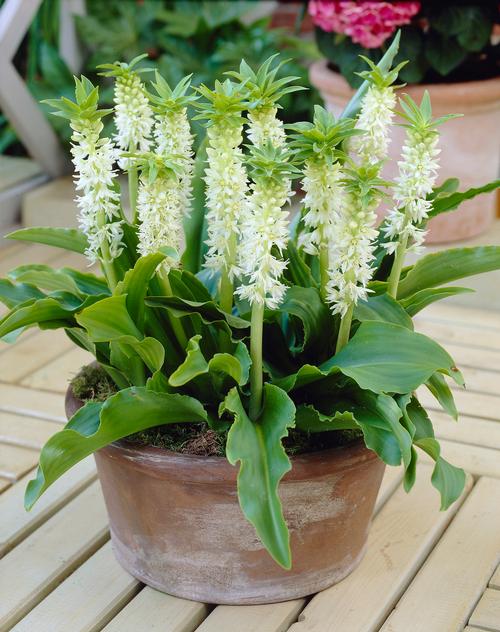
Å formere Eucomis er en givende prosess som lar deg utvide din samling og dele denne vakre planten med venner og familie. Det er flere metoder for formering, og vi vil beskrive de mest effektive.
Formering med Frø: En Langsom, men Spennende Prosess
Formering med frø er en langsommere metode, men den kan være svært givende, spesielt hvis du er interessert i å dyrke nye, unike kultivarer. Eucomis-frø modnes i dekorative frøkapsler etter blomstring. Høst frøene når kapslene begynner å tørke og sprekke opp, vanligvis sent på høsten. Frøene er små og svarte.
Så frøene i potter med en godt drenert såjord om høsten eller tidlig våren. Dekk frøene lett med jord og hold jorden jevnt fuktig. Spiring kan være uregelmessig og ta flere uker til måneder. Frøplanter vil vokse sakte og vil vanligvis ikke blomstre før 2-4 år etter såing. Vi anbefaler å gi frøplanter et beskyttet miljø i de første årene for å sikre optimal vekst.
Formering med Løkskiver: Effektiv Utvidelse
En mer effektiv metode for å formere Eucomis er ved å bruke løkskiver. Dette gjøres best om våren, når løkene tas ut av vinterlagring eller når du omplanter dem. En stor, sunn Eucomis-løk kan deles. Skjær løken vertikalt i 2-4 seksjoner, sørg for at hver seksjon har en del av grunnplaten (den flate bunnen der røttene vokser fra) og minst ett «øye» (vekstpunkt).

Dryss eventuelt de kuttede flatene med et soppdrepende middel for å forhindre råte. Plant løkskivene i en godt drenert potte med sandholdig pottejord, med toppen av skiven så vidt synlig over jordoverflaten. Hold jorden lett fuktig, men ikke våt. Nye små løker vil danne seg fra grunnplaten på hver skive. Denne metoden er svært effektiv for å raskt øke antall planter.
Formering med Sideskudd (Offsets): Den Enkleste Metoden
Den enkleste og mest direkte metoden for å formere Eucomis er gjennom sideskudd, også kjent som «offsets» eller «løklinger». Mange Eucomis-arter produserer små sideløker som utvikler seg ved siden av den «morløken». Disse kan forsiktig skilles fra morløken når du graver opp planten om høsten for overvintring, eller når du omplanter den om våren.
Sørg for at hver sideløk har sitt eget sett med røtter. Plant disse små løkene umiddelbart i potter eller direkte i hagen, avhengig av størrelse og klima. De vil vanligvis vokse raskere enn frøplanter og kan blomstre allerede i sin første eller andre sesong.
Eucomis og Bærekraft: En Plante for Fremtiden
I en tid der bærekraft og miljøbevissthet er av ytterste viktighet, spiller Eucomis en rolle i skapelsen av mer robuste og miljøvennlige hagemiljøer. Dens relativt lave vedlikeholdsbehov og evne til å trives under ulike forhold gjør den til et bærekraftig valg for mange hager.
Tørketoleranse og Vannbevaring
Selv om Eucomis foretrekker jevn fuktighet under vekstsesongen, er den, når den er etablert, bemerkelsesverdig tørketolerant sammenlignet med mange andre hageplanter. Dens evne til å lagre vann i løken gjør den mer motstandsdyktig mot perioder med tørke, noe som reduserer behovet for overdreven vanning. Dette er en betydelig fordel i regioner med vannrestriksjoner eller for gartnere som ønsker å redusere sitt vannforbruk. Vi anbefaler å etablere et dypt rotsystem gjennom grundig vanning i begynnelsen av vekstsesongen for å maksimere denne tørketoleransen.
Biologisk Mangfold og Pollinatorer
Selv om Eucomis ikke er en typisk pollinatorplante i samme grad som mange nektarrike blomster, tiltrekker den seg likevel visse insekter. Noen arter av bier og fluer kan besøke blomstene, spesielt de som produserer pollen. Ved å inkludere Eucomis i en mangfoldig hage, bidrar du til å skape et bredere økosystem som støtter ulike insektarter. Dets unike form og tekstur bidrar også til det visuelle mangfoldet i hagen, noe som er viktig for å opprettholde en sunn og balansert flora.
Langsiktig Investering i Hagen
Som en staude som kan leve i mange år med riktig pleie og overvintring, representerer Eucomis en langsiktig investering i hagen. I stedet for å måtte plante nye årlige blomster hvert år, kan Eucomis bidra med skjønnhet sesong etter sesong. Dette reduserer behovet for stadig innkjøp av nye planter, noe som igjen reduserer ressursforbruk og avfall. Dens robusthet og relativt lave sykdoms- og skadedyrproblemer betyr også mindre behov for kjemiske behandlinger, noe som ytterligere underbygger dens bærekraftige profil.
Avanserte Dyrketeknikker og Problemløsning for Eucomis
Selv for erfarne gartnere kan det oppstå utfordringer. Her deler vi avanserte dyrketeknikker og problemløsningstips for å sikre at dine Eucomis-planter trives, selv under mindre ideelle forhold.
Forbedring av Blomstring: Hva Gjør Du Hvis Din Eucomis Ikke Blomstrer?
Det er frustrerende når Eucomis-planten din ikke blomstrer, til tross for tilsynelatende sunn vekst. Årsakene kan være flere, og vi vil utforske de vanligste og gi løsninger:
- Utilstrekkelig Lys: Eucomis trenger rikelig med sollys for å danne blomsterknopper. Hvis planten din er i for mye skygge, kan den produsere frodig bladverk, men ingen blomster. Løsning: Flytt planten til et sted med mer direkte sollys, ideelt sett minst 6-8 timer per dag.
- For Mye Nitrogen: En gjødsel med for høyt nitrogeninnhold fremmer bladvekst på bekostning av blomster. Løsning: Bruk en balansert gjødsel, eller en med høyere fosfor- og kaliuminnhold, under vekstsesongen. Stopp gjødsling sent på sommeren.
- Utilstrekkelig Næring: Mangel på essensielle næringsstoffer kan også hemme blomstringen. Løsning: Sørg for at planten får en jevn tilførsel av næringsstoffer gjennom riktig gjødsling.
- Dårlig Drenering / Løkråte: Hvis løken er skadet av råte, vil den ikke blomstre. Løsning: Forbedre jorddrenering. Grav eventuelt opp løken, sjekk for råte, og plant den på nytt i bedre drenert jord.
- Ung Løk: Hvis planten er dyrket fra frø eller en veldig liten sideløk, kan den trenge et par år for å modnes nok til å blomstre. Løsning: Vær tålmodig. Gi planten optimal pleie, og den vil blomstre når den er klar.
- Overvintringsproblemer: Hvis løken ikke har overvintret riktig (for varmt, for tørt, for vått), kan den være svekket og ikke blomstre. Løsning: Revider din overvintringsstrategi for å sikre optimale forhold.
Forlenge Blomstringsperioden: Tips og Triks
For å maksimere nytelsen av Eucomis-blomstene, kan du implementere noen strategier for å forlenge blomstringsperioden:
- Riktig Vanning og Gjødsling: Konsekvent vanning og riktig gjødsling gjennom hele vekstsesongen vil opprettholde plantens vitalitet og fremme vedvarende blomstring.
- Dødhodeing (Deadheading): Selv om det ikke er strengt nødvendig for Eucomis, kan fjerning av visne blomsterhoder noen ganger bidra til å omdirigere energi til å produsere flere blomster i stedet for frø. Vær imidlertid forsiktig så du ikke fjerner de dekorative frøkapslene hvis du ønsker å nyte dem.
- Plassering: En plassering som gir full sol, men også litt skygge under den varmeste delen av dagen, kan forhindre at blomstene blekner for raskt i intens varme.
- Sorter med Lang Blomstring: Velg kultivarer som er kjent for sin lange blomstringsperiode.
Eucomis i Kaldere Klima: Spesielle Hensyn
For gartnere i kaldere klimaer (f.eks. USDA sone 6 og lavere) er Eucomis best behandlet som en sommerløk som må graves opp og lagres innendørs om vinteren. Vi har allerede dekket dette i detalj, men gjentar viktigheten av en grundig tørkeperiode og riktig lagringstemperatur og fuktighet for å forhindre råte og sikre levedyktighet for neste sesong. For de som ønsker å eksperimentere med utendørs overvintring i grensesoner, er et svært tykt lag med mulch (minst 20-30 cm) avgjørende, og selv da er det ingen garanti.
I kaldere klima kan det også være gunstig å starte løkene innendørs i potter 4-6 uker før den siste forventede frosten. Dette gir plantene et forsprang og en lengre vekstsesong når de flyttes utendørs, noe som øker sjansen for vellykket blomstring.

Ofte Stilte Spørsmål om Eucomis
For å sikre at alle dine spørsmål blir besvart, har vi samlet de mest stilte spørsmålene om Eucomis og gitt omfattende svar.
Er Eucomis Giftig?
Ja, alle deler av Eucomis-planten er ansett som giftige hvis de inntas, spesielt løkene. De inneholder alkaloider som kan forårsake magebesvær, kvalme, oppkast og diaré. Vi anbefaler alltid å utvise forsiktighet når du håndterer planten, spesielt løkene, og å holde den utenfor rekkevidde for små barn og kjæledyr som har en tendens til å gnage på planter. Bruk hansker når du planter eller graver opp løkene.
Hvor lenge Blomstrer Eucomis?
Blomstringsperioden for Eucomis varierer avhengig av art, kultivar og klima, men de fleste vil blomstre i 3-6 uker. Noen tidligblomstrende varianter kan starte i midtsommer, mens andre fortsetter å blomstre inn i tidlig høst. Riktig pleie, inkludert tilstrekkelig sollys, vanning og gjødsling, kan bidra til å maksimere lengden på blomstringsperioden.
Kan Eucomis Dyrkes Innendørs?
Ja, Eucomis kan absolutt dyrkes innendørs som en potteplante, spesielt i kaldere klimaer der overvintring utendørs er utfordrende. For innendørs dyrking, sørg for å gi planten:
- Rikelig med lyst lys: Plasser den i et solrikt vindu eller under vekstlys.
- God drenering: Bruk en potte med dreneringshull og en godt drenert pottejord.
- Regelmessig vanning: Hold jorden jevnt fuktig under vekstsesongen, men unngå overvanning.
- Dvaleperiode: Om vinteren må planten ha en dvaleperiode. Reduser vanningen drastisk, og flytt potten til et kjøligere, mørkere sted.
Innendørs dyrking gir deg mulighet til å nyte Eucomis’ unike skjønnhet selv når utendørssesongen er over.
Hvor ofte Bør jeg Dele Min Eucomis?
Eucomis-løker produserer naturlig sideløker over tid, og plantene kan bli overfylte. Vi anbefaler å dele løkene hvert 3-5 år, eller når du merker at blomstringen avtar eller plantene ser overfylte ut. Dette revitaliserer planten og forbedrer blomstringen. Den beste tiden å dele er om våren, når du graver opp løkene for å plante dem, eller når du tar dem ut av vinterlagring. Skill forsiktig av sideløkene og plant dem på nytt.
Hvorfor Blir Bladene på Min Eucomis Gule?
Gule blader på Eucomis kan indikere flere problemer:
- Overvanning: Dette er den vanligste årsaken. For mye vann fører til løkråte, som manifesteres som gule, visne blader. Løsning: Sørg for bedre drenering og reduser vanningen.
- Undervanning: Hvis jorden er konstant tørr, kan bladene også gulne. Løsning: Øk vanningen, spesielt under varme perioder.
- Næringsmangel: Mangel på essensielle næringsstoffer kan føre til klorose (gulning). Løsning: Sørg for riktig gjødsling.
- Naturlig Dvaleperiode: Om høsten er det normalt at bladene gulner og visner, da planten forbereder seg på dvale. Dette er ikke et tegn på sykdom.
- Sykdom eller Skadedyr: Sjeldnere kan alvorlige sykdommer eller skadedyrangrep forårsake gulning. Inspiser planten grundig.
Eucomis: En Plante for Alle Sanser
Utover sin visuelle skjønnhet, tilbyr Eucomis en opplevelse for flere sanser. Dens unike tekstur, fra de glatte bladene til de ru blomsterstenglene, inviterer til berøring. Og selv om den ikke er kjent for sin sterke duft, vil en nær inspeksjon av blomstene ofte avsløre en subtil, behagelig aroma. Vår dypdykk i Eucomis er ment å være en kilde til kunnskap, men også en inspirasjon til å utforske og nyte denne ekstraordinære planten i alle dens fasetter.
Vi har delt våre beste råd og tips, basert på mange års erfaring og forskning, for å gi deg verktøyene til å lykkes med ananasliljen. Fra de innledende trinnene med jordforberedelse og planting, til de mer avanserte teknikkene for overvintring og formering, er vår guide en omfattende ressurs designet for å gi deg tilliten til å dyrke Eucomis med fremragende resultater. Enten du er en nybegynner eller en erfaren gartner, er vi sikre på at du vil finne verdifull innsikt her.
Inkluderingen av Eucomis i din hage er ikke bare et valg av en vakker plante; det er en invitasjon til å omfavne det uventede, det eksotiske og det bemerkelsesverdige. Dens evne til å trives i en rekke miljøer, kombinert med dens relativt lave vedlikeholdsbehov, gjør den til et bærekraftig og givende tillegg til ethvert landskap. La Eucomis’ ananaslignende blomsterstander bli et samtaleemne i din hage, et symbol på din lidenskap for det grønne, og et vitnesbyrd om naturens uendelige skjønnhet og mangfold. Vi oppfordrer deg til å ta spranget, plante din første Eucomis, og se den forvandle hagen din med sin unike og uforglemmelige sjarm. Den ultimate ananasliljen venter på å bli oppdaget av deg.

